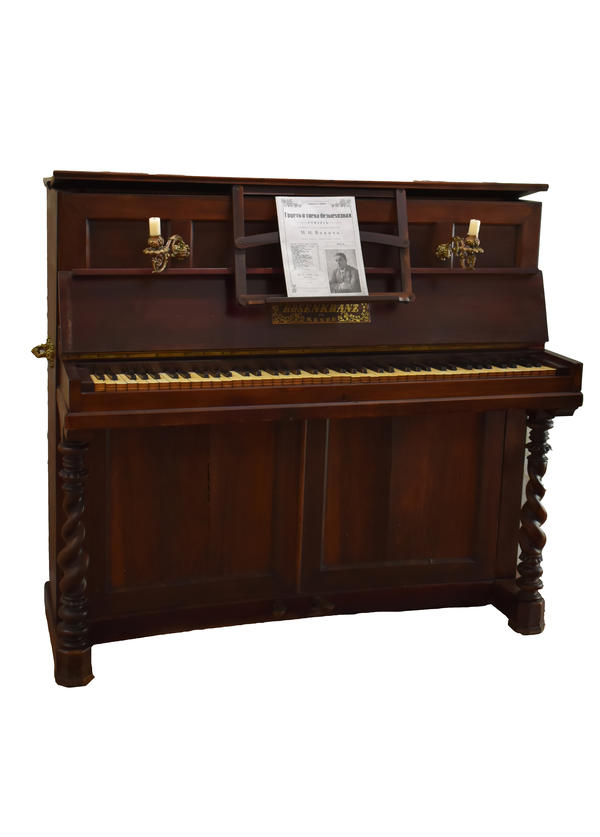The upright piano was specially designed to be played in a small room. Unlike a concert grand piano, the soundboard, strings and mechanical parts of the instrument are positioned vertically, which saves a lot of space.
The precursor of the piano was the harpsichord, but it was impossible to reproduce the dynamics of a musical phrase because the volume level was unchanging. The invention of the mechanism of the modern instrument dates back to the early 18th century: similar designs were created by the Italian master Cristofori, the Frenchman Marius and the German Schröter.
The early 19th century (1800 and 1801) gave music lovers the first upright pianos — in Austria and America. Half a century later, the instrument took on its current form. Around this time, the German pianist and piano maker Ernst Philipp Rosenkranz established a workshop in Dresden, which survived into the 20th century. In 1828, his son Friedrich Wilhelm took over the company. The products offered by the Rosencrantz family were of an excellent quality; they were expensive and, apparently, not very numerous. The company became known by exporting instruments to North America.
In Russia of the 19th and early 20th centuries, music-making was on the list of obligatory skills for girls from good families. Home chamber concerts were popular, where family members and friends played pianos, flutes and violins, performed classical works, and sang romantic and folk songs.
The piano in the exhibition came to the Belgorod region in 1945 as a captured item. It is a compact “cabinet” piece, a contemporary of Mikhail Yurievich Lermontov. Only a man of wealth and high position could afford one.
The museum received this item from the villagers of Krasnoye, Krasnensky District, Belgorod Region. Unclaimed, the instrument, which had been stored in a barn for a long time, was in need of restoration despite its good overall condition. If properly tuned, it still has a good sound and is a reminder of a time when the piano in the house was both a luxury and a necessity.
The precursor of the piano was the harpsichord, but it was impossible to reproduce the dynamics of a musical phrase because the volume level was unchanging. The invention of the mechanism of the modern instrument dates back to the early 18th century: similar designs were created by the Italian master Cristofori, the Frenchman Marius and the German Schröter.
The early 19th century (1800 and 1801) gave music lovers the first upright pianos — in Austria and America. Half a century later, the instrument took on its current form. Around this time, the German pianist and piano maker Ernst Philipp Rosenkranz established a workshop in Dresden, which survived into the 20th century. In 1828, his son Friedrich Wilhelm took over the company. The products offered by the Rosencrantz family were of an excellent quality; they were expensive and, apparently, not very numerous. The company became known by exporting instruments to North America.
In Russia of the 19th and early 20th centuries, music-making was on the list of obligatory skills for girls from good families. Home chamber concerts were popular, where family members and friends played pianos, flutes and violins, performed classical works, and sang romantic and folk songs.
The piano in the exhibition came to the Belgorod region in 1945 as a captured item. It is a compact “cabinet” piece, a contemporary of Mikhail Yurievich Lermontov. Only a man of wealth and high position could afford one.
The museum received this item from the villagers of Krasnoye, Krasnensky District, Belgorod Region. Unclaimed, the instrument, which had been stored in a barn for a long time, was in need of restoration despite its good overall condition. If properly tuned, it still has a good sound and is a reminder of a time when the piano in the house was both a luxury and a necessity.



